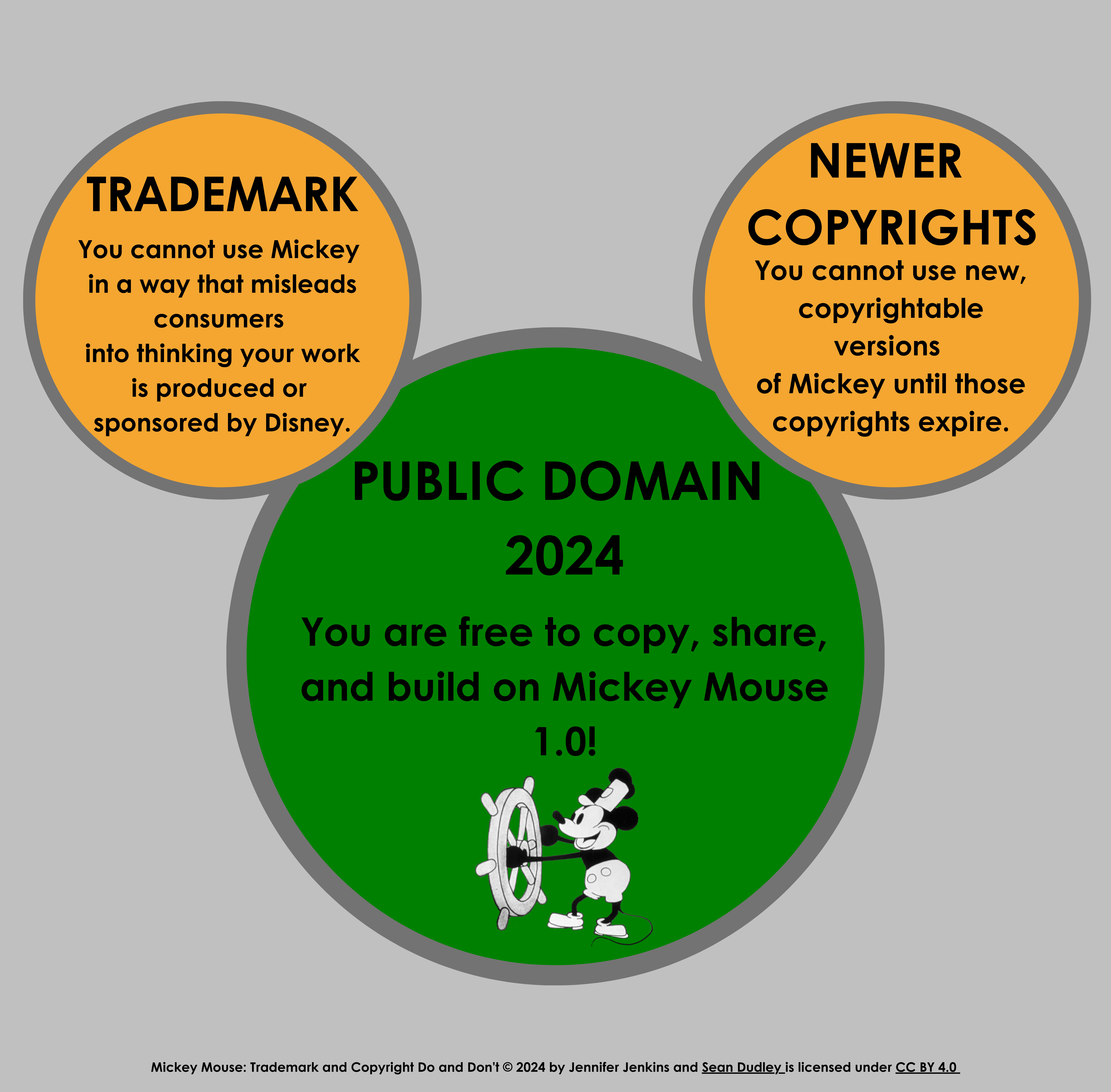The Mouse in the Public Domain: A New Era for Mickey

On January 1, 2024, a significant milestone in the world of entertainment occurred: Mickey Mouse, the iconic mascot of Walt Disney Company, entered the public domain. This means that anyone can now freely use, copy, and distribute the original version of Mickey Mouse, as seen in the 1928 short film "Steamboat Willie."
Disney's decision to allow Mickey Mouse to enter the public domain marks a significant shift in its approach to copyright protection. For decades, the company has been known for its aggressive stance on protecting its intellectual property, even going so far as to lobby for copyright extensions that have drawn criticism from some quarters.
However, there are several reasons why Disney may have decided to loosen its grip on Mickey Mouse. First, the company has built an empire that is no longer solely reliant on its iconic rodent. In recent years, Disney has acquired a vast array of popular properties, including Marvel, Lucasfilm, and Pixar, among others. These acquisitions have given the company a diverse portfolio of characters and stories that are still under copyright protection.
Second, the public domain has played a significant role in Disney's own success. In the early years of the company, Walt Disney drew inspiration from public domain works such as "Alice's Adventures in Wonderland" and "Peter Pan." These works provided Disney with the raw materials for his creative endeavors, and he was able to build his empire on the foundation of public domain stories and characters.
Is Mickey Mouse really free to use?
It is important to note that while the original version of Mickey Mouse is now in the public domain, Disney still holds trademarks on the character. This means that anyone who uses Mickey Mouse in a commercial setting must be careful not to create confusion among consumers. For example, a company cannot sell a product with Mickey Mouse on it without Disney's permission unless it has clear distinction that the product was neither produced nor sponsored by Disney. The company cannot prevent people from using Mickey Mouse in artistic works, such as cartoons or books, as long as it is clear that the work is not produced or sponsored by Disney.

As professor of Law and director of Duke Center for the Study of Public Domain, Jennifer Jenkins says:
Steamboat Willie and the characters it depicts – which include both Mickey and Minnie Mouse – will be in the public domain. (Courts have made clear that “when a story falls into the public domain, story elements — including characters covered by the expired copyright — become fair game for follow-on authors.”) As indicated in the green circle, this means that anyone can share, adapt, or remix that material. You can start your creative engines too—full steam ahead! You could take a page out of the Winnie-the-Pooh: the Deforested Edition playbook and create “Steamboat Willie: the Climate Change Edition,” in which Mickey’s boat is grounded in a dry riverbed. You could create a feminist remake with Minnie Mouse as the central figure. You could reimagine Mickey and Minnie dedicating themselves to animal welfare. (The animals in Steamboat Willie are contorted rather uncomfortably into musical instruments. PETA would not approve.)
The entry of Mickey Mouse into the public domain is a significant event that will have a ripple effect throughout the entertainment industry. It will be interesting to see how creatives use this opportunity to reimagine and reinterpret one of the most iconic characters in history. Only time will tell what the future holds for Mickey Mouse, but one thing is for sure: his legacy will continue to inspire and entertain for generations to come.
What's the purpose of the Public Domain?
The public domain plays a crucial role in society's evolution and the advancement of knowledge. It acts as a vast repository of creative works, providing a springboard for innovation and exploration. By allowing for the free use, adaptation, and reimagination of public domain materials, societies foster a culture of creativity and open-source collaboration.
Imagine a world without the public domain – a world where every creative work remains under the exclusive control of its creator or their heirs. This would stifle innovation and limit the dissemination of ideas. Without the ability to freely build upon and reinterpret existing works, progress would slow down, and society would miss out on the transformative power of creative repurposing.
The public domain allows for the continuous evolution of knowledge and understanding. It enables scholars and researchers to draw upon a rich tapestry of ideas and insights, leading to new discoveries and advancements in various fields. By allowing for the free exchange and adaptation of public domain works, we open doors to new perspectives and approaches, fostering a dynamic and ever-evolving intellectual landscape.
Moreover, the public domain promotes cultural diversity and inclusivity. By giving everyone access to a vast array of creative works, regardless of their financial means or social background, we democratize access to knowledge and expression. This fosters a more inclusive society where creativity and innovation can flourish without barriers.
In conclusion, the public domain is not merely a legal concept; it is an engine of societal progress and a catalyst for intellectual growth. It allows us to build upon the achievements of the past, reimagine the present, and shape a more creative and inclusive future. By cherishing and expanding the public domain, we nurture a society that thrives on innovation, knowledge sharing, and the pursuit of a better tomorrow.





